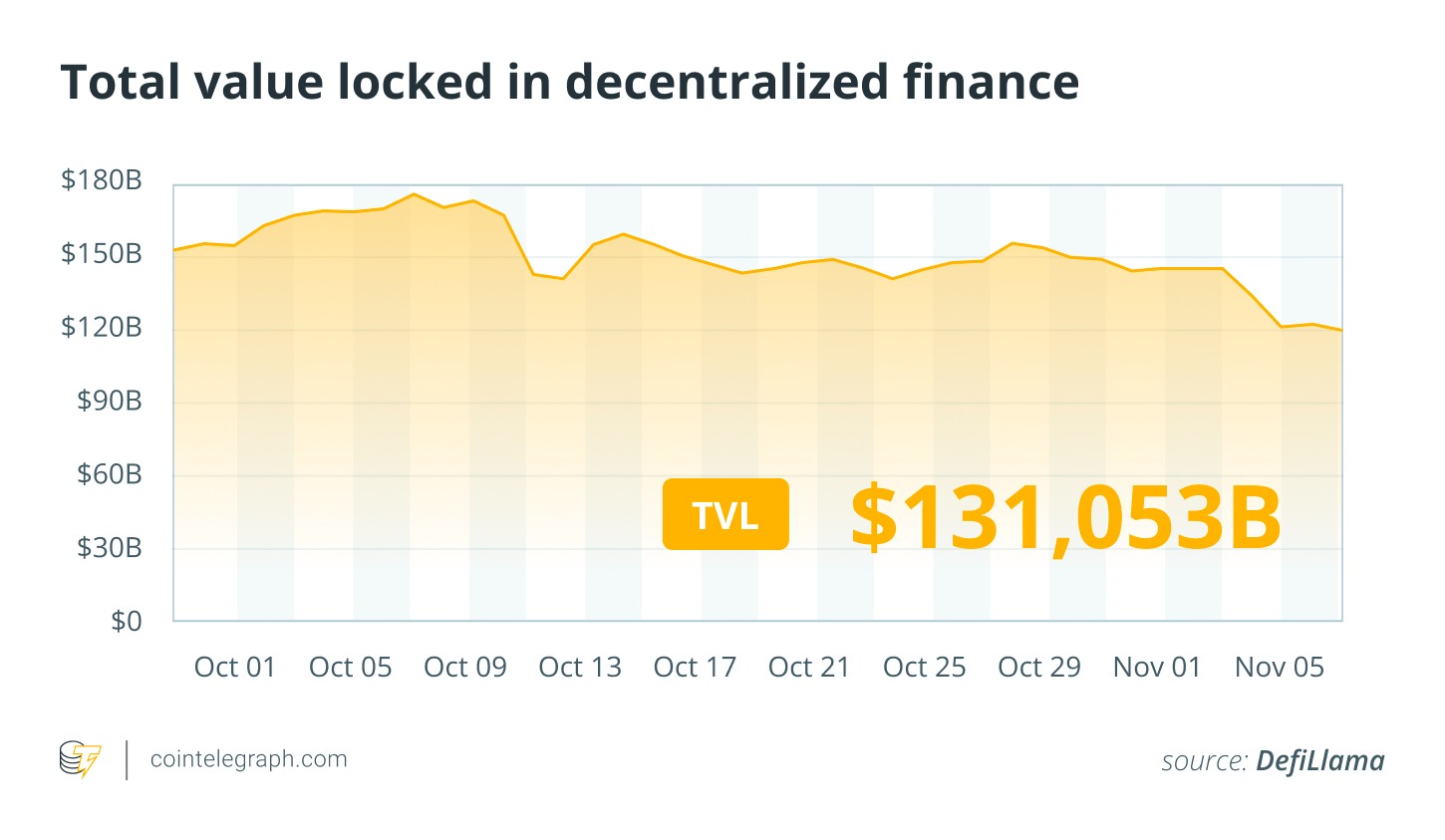Recent DeFi incidents in 2025, including Balancer’s $116 million exploit and Stream Finance’s $93 million loss, highlight vulnerabilities in decentralized finance, prompting reforms like RedStone’s risk ratings and the Ethereum Protocol Advocacy Alliance to enhance security and policy engagement.
-
Balancer Hack: A sophisticated exploit drained $116 million from liquidity pools, targeting stable assets like wstETH and osETH.
-
Stream Finance Collapse: Exposed $284 million in loans and stablecoins, causing depeggings and liquidity issues across protocols.
-
Industry Response: Initiatives from RedStone and major Ethereum protocols aim to introduce risk scoring and advocate for better regulations, with DeFi TVL dropping to $193 billion.
Discover the latest DeFi incidents shaking the crypto world in 2025, from major hacks to reform efforts. Stay informed on risks and innovations driving a safer ecosystem today.
What Are the Latest DeFi Incidents and Reforms in 2025?
DeFi incidents in 2025 have exposed critical vulnerabilities, with Balancer losing over $116 million to a smart contract exploit and Stream Finance facing a $93 million shortfall that rippled through lending markets. These events underscore the need for robust security, leading to launches like RedStone’s Credora platform for real-time risk assessments and the formation of the Ethereum Protocol Advocacy Alliance to influence policy.
How Did the Balancer Exploit Unfold and Impact the DeFi Space?
The Balancer incident on Monday involved faulty access controls in its v2 contracts, allowing unauthorized withdrawals from liquidity pools holding staked Ether and tokens. Initial losses reached $70 million before escalating to $116 million, primarily affecting liquid staking derivatives such as Lido’s wstETH and StakeWise’s osETH. Balancer’s team responded by offering a 20% white hat bounty and collaborating with law enforcement and blockchain forensics firms for recovery efforts.
Community scrutiny highlighted the protocol’s prior 10-plus audits, yet the breach occurred due to a sophisticated attack planned over months. Conor Grogan, director at Coinbase, noted the attacker’s experience and potential ties to past exploits, emphasizing ongoing risks in DeFi infrastructure. A preliminary post-mortem revealed the exploit targeted v2 Stable Pools and Composable Stable v5 pools.

Source: Lookonchain
DeFi Sleuths Trace $284 Million in Loans and Stablecoin Risk Linked to Stream Finance
Stream Finance’s disclosure of a $93 million loss from an external fund manager triggered widespread stablecoin depeggings and liquidity freezes. Analysts from Yields and More identified over $284 million in interconnected loans and stablecoins tied to Stream Finance’s synthetic assets like xUSD, xBTC, and xETH. Protocols such as Euler, Solo, Morpho, and Gearbox faced exposure through stablecoin loops and vaults, amplifying contagion risks.
TelosC and Elixir were hit hardest, with Elixir’s $68 million exposure representing 65% of its stablecoin reserves. By Friday, Elixir suspended support for its deUSD token after redeeming 80% of holdings, causing it to lose its dollar peg. This collapse contributed to a broader DeFi total value locked decline from $221 billion in October to $193 billion in early November, amid $20 billion in liquidations.

Source: Elixir
RedStone Unveils DeFi Risk Ratings
Modular oracle network RedStone introduced Credora, a platform providing DeFi-native risk ratings with real-time credit and collateral analytics for protocols like Morpho and Spark. This initiative delivers dynamic risk scoring and default probability data via APIs, addressing transparency gaps following October’s volatility. Chainlink, S&P Global Ratings, and Hacken experts agree that verifiable creditworthiness is essential for DeFi’s evolution beyond speculative yields.
RedStone’s launch reflects a concerted push toward a more secure DeFi landscape, where oracles and analytics firms evaluate yield and collateral sustainability to prevent future incidents.
DeFi Players Launch Alliance to Champion Ethereum to Policymakers
Leading DeFi protocols, including Aave, Uniswap, Lido, Curve, Spark, Aragon, and The Graph, formed the Ethereum Protocol Advocacy Alliance (EPAA) to advocate for Ethereum in Washington. Backed by the Ethereum Foundation, the coalition counters the influence of centralized crypto entities by educating policymakers on decentralized infrastructure’s technical aspects.
EPAA plans to create educational resources, offer technical expertise, and unify messaging on non-custodial systems and governance issues. This effort ensures onchain protocols shape regulatory outcomes alongside centralized projects.

Ethereum protocols unveil new alliance. Source: EPAA
Web3 Gaming, DeFi Lead Sector Activity in October
Despite a dip in overall Web3 engagement, DeFi captured 18.4% of decentralized application activity in October, per DappRadar data. Total value locked fell 6.3% to $221 billion, then another 12% to $193 billion, linked to liquidations and Stream Finance’s fallout. Protocols like Raydium, Pump.fun, and Jupiter Exchange maintained robust usage amid the turbulence.

Industry Report October 2025. Source: DappRadar
DeFi Market Overview
Data from Cointelegraph Markets Pro and TradingView shows most of the top 100 cryptocurrencies ended the week down. Stables Labs USDX token plummeted 69%, the largest decline, followed by Paparazzi Token’s 54% drop. These movements reflect ongoing DeFi pressures from exploits and market corrections.

Total value locked in DeFi. Source: DefiLlama
Frequently Asked Questions
What Caused the Balancer DeFi Exploit in 2025?
The Balancer hack stemmed from faulty access controls in v2 smart contracts, enabling direct withdrawals from liquidity pools. Losses totaled $116 million, mainly in staked assets, despite extensive audits. The protocol is pursuing recovery through bounties and investigations.
How Is the DeFi Ecosystem Responding to Recent Incidents?
Responses include RedStone’s Credora for risk ratings, providing real-time analytics to protocols like Morpho. The EPAA alliance engages policymakers to promote secure decentralized systems, ensuring DeFi’s growth aligns with regulatory needs for stability and innovation.
Key Takeaways
- Security Gaps Persist: Despite audits, exploits like Balancer’s reveal the need for advanced access controls and ongoing monitoring in DeFi protocols.
- Contagion Risks Amplified: Stream Finance’s failure exposed $284 million in linked assets, underscoring interconnected vulnerabilities in lending and stablecoin markets.
- Reforms Drive Resilience: Initiatives from RedStone and EPAA offer tools for better risk assessment and policy advocacy, guiding users toward safer DeFi participation.
Conclusion
The 2025 DeFi incidents, from Balancer’s exploit to Stream Finance’s collapse, have accelerated reforms like RedStone’s risk ratings and the Ethereum Protocol Advocacy Alliance’s efforts. These developments emphasize transparency and regulatory engagement to fortify the ecosystem. As DeFi evolves, protocols must prioritize security—explore these innovations to navigate the space confidently.
